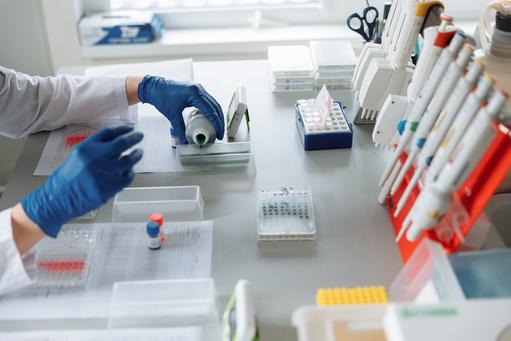Tag
Tagged: cancer diagnosis
Directory:
Tags:

- AstraZeneca has turned traditional biopharma R&D on its head and is targeting early stage cancer
- This strategy benefits from some of AstraZeneca’s R&D endeavours
- But the strategy faces strong headwinds, which include significant technological and market challenges and substantial Competition from at least two unicorns
AstraZeneca’s strategy to target early cancer
Will José Baselga’s gamble pay off?
Baselga is AstraZeneca's new cancer research chief who has turned traditional biopharmaceutical drug development on its head by announcing AstraZeneca’s intention to target early- rather than late-stage cancer. “We need to spend our resources on those places where we can cure more people and that’s in early disease”, says Baselga, who knows that early detection can significantly improve patient survival rates and quality of life, as well as substantially reducing the cost and complexity of cancer treatment. Baselga also must know his strategy is high risk. Will it work?
Baselga is AstraZeneca's new cancer research chief who has turned traditional biopharmaceutical drug development on its head by announcing AstraZeneca’s intention to target early- rather than late-stage cancer. “We need to spend our resources on those places where we can cure more people and that’s in early disease”, says Baselga, who knows that early detection can significantly improve patient survival rates and quality of life, as well as substantially reducing the cost and complexity of cancer treatment. Baselga also must know his strategy is high risk. Will it work?
In this Commentary
In this Commentary we discuss the drivers and headwinds of AstraZeneca’s strategy to increase its R&D focus on early stage cancer. But first we briefly describe cancer, the UK’s situation with regard to the disease and explain why big pharma targets advanced cancers. Also, we provide a brief description of AstraZeneca’s recent history.
What is cancer?
Cancer occurs when a normal cell’s DNA changes and multiplies to form a mass of abnormal cells, which we refer to as a tumour. If not controlled and managed appropriately the tumour can spread and invade other tissues and organs. In the video below Whitfield Growdon, a surgical oncologist at the Massachusetts General Hospital in Boston US, and a Professor at the Harvard University Medical School explains.
The UK’s record of cancer treatment
In the UK cancer survival rates vary between types of the disease, ranging from 98% for testicular cancer to just 1% for pancreatic cancer. Although the UK’s cancer survival rates lag those of other European countries, the nation’s overall cancer survival rate is improving. Several cancers are showing significant increases in five-year survival, including breast (80% to 86%), prostate (82% to 89%), rectum (55% to 63%) and colon (52% to 60%). Many of the most commonly diagnosed cancers in the UK have ten-year survival of 50% or more. With regard to cancer spending, compared with most Western European countries, including France, Denmark, Austria and Ireland, the UK spends less on cancer per person, with Germany spending almost twice as much per head.
Why big pharma targets advanced cancers?
Most cancers are detected late when symptoms have manifested themselves, which renders treatment less effective and more costly. When cancer is caught early, as in some cases of breast and prostate cancer, tumours tend to be removed surgically or killed by chemoradiation therapy (CRT) and this, for many people, provides a “cure”, although in some cases the cancer returns.
Studies in developed economies suggest that treatment costs for early-diagnosed cancer patients are two to four times less expensive than treating those diagnosed with advanced-stage cancer. Notwithstanding, there are physical, psychological, socio-economic and technical challenges to accessing early cancer diagnosis and these conspire to delay cancer detection. Thus, big pharma companies have traditionally aimed their new cancer drugs at patients with advanced forms of the disease. This provides pharma companies access to patients who are willing to try unproven therapies, which significantly helps in their clinical studies. And further, big pharma is advantaged because regulators tend to support medicines that slow tumour growth and prolong life, albeit by a few months.
Studies in developed economies suggest that treatment costs for early-diagnosed cancer patients are two to four times less expensive than treating those diagnosed with advanced-stage cancer. Notwithstanding, there are physical, psychological, socio-economic and technical challenges to accessing early cancer diagnosis and these conspire to delay cancer detection. Thus, big pharma companies have traditionally aimed their new cancer drugs at patients with advanced forms of the disease. This provides pharma companies access to patients who are willing to try unproven therapies, which significantly helps in their clinical studies. And further, big pharma is advantaged because regulators tend to support medicines that slow tumour growth and prolong life, albeit by a few months.
Imfinzi: the only immunotherapy to demonstrate survival at three years
A good example of this is AstraZeneca’s immunotherapy drug called Imfinzi (durvalumab) used in unresectable stage-III non-small cell lung cancer (NSCLC), which has not spread outside the chest and has responded to initial chemoradiation therapy. Imfinzi works by binding to and blocking a protein called PD-L1, which acts to disguise cancer cells from your immune system. Imfinzi removes the disguise so that your immune system is better able to find and attack your cancer cells.
Findings presented at the June 2019 meeting of the American Society of Clinical Oncology (ASCO), build on a clinical study of Imfinzi reported in the September 2018 edition of The New England Journal of Medicine, and suggest that Imfinzi is the only immunotherapy to demonstrate survival at three years in unresectable stage-III NSCLC. AstraZeneca has begun a phase-3 clinical study of the PD-L1 inhibitor protein in stage II NSCLC patients.
Findings presented at the June 2019 meeting of the American Society of Clinical Oncology (ASCO), build on a clinical study of Imfinzi reported in the September 2018 edition of The New England Journal of Medicine, and suggest that Imfinzi is the only immunotherapy to demonstrate survival at three years in unresectable stage-III NSCLC. AstraZeneca has begun a phase-3 clinical study of the PD-L1 inhibitor protein in stage II NSCLC patients.
|
|
Directory:
Tags:

|
|
|
Directory:
Tags:

|
Directory:
Tags:

|
|
Malignant is a clinical word used to describe a cancerous tumour that has the tendency to worsen and spread by invading adjacent tissue and tissue further away from the initial disease site.












